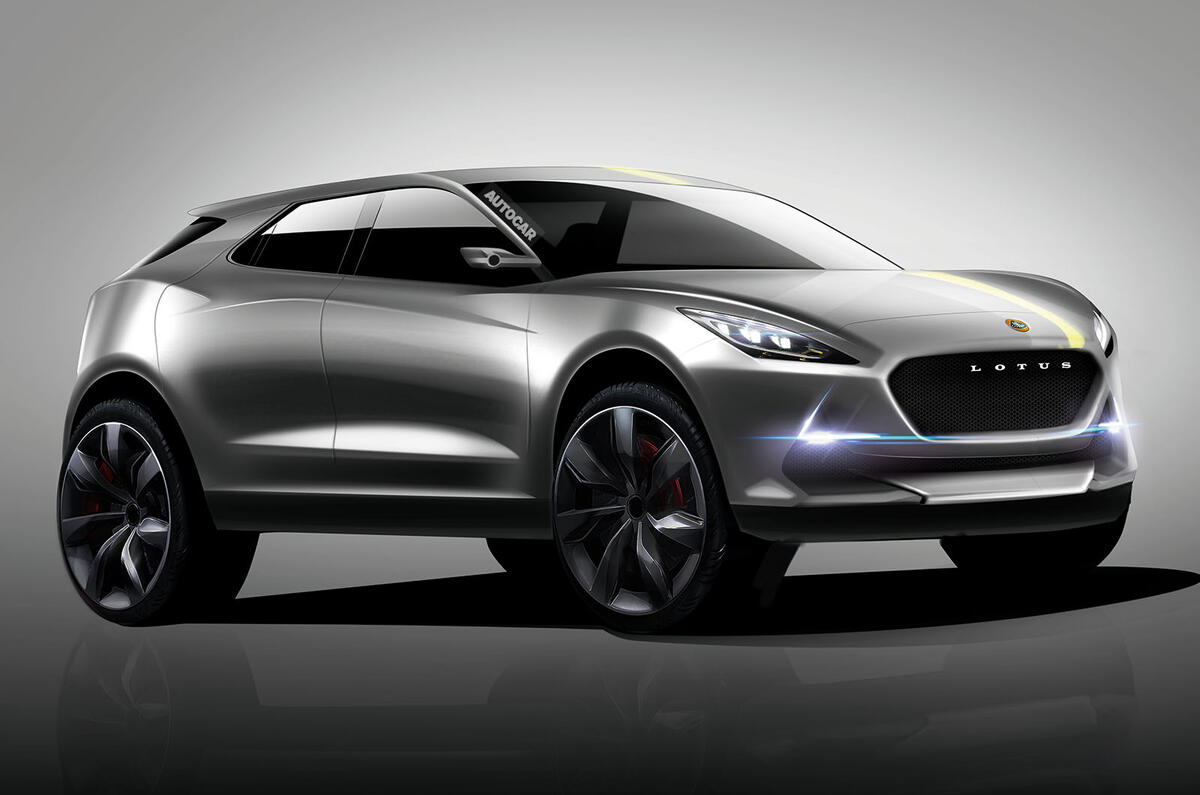Lotus boss Jean-Marc Gales believes there is a gap in the market for a “lightweight, good-handling SUV” as he plots the revitalised sports car maker’s future model plans.
Gales has confirmed that the first Lotus to appear in a next-generation line-up will be a replacement for the Elise in 2020, followed soon after by its more hardcore Lotus Exige sibling. A new Lotus Evora will complete the new range of sports cars by 2022.
By this point, Lotus’s SUV may well be ready for production as a fourth model line, with the Norfolk-based company joining the likes of Porsche, Jaguar, Maserati, Lamborghini, Aston Martin, Rolls-Royce and Bentley in recognising the benefits an SUV can have in boosting profitability.
Gales told Autocar recently that work on a prototype SUV model had started. The car has not yet been signed off for production, nor a design finalised, but if the company makes a success of its turnaround plans, the SUV is “four or five years away, as with the rest of the new range”, said Gales.
The most likely option for the development of the SUV is for Lotus to work with its Chinese engineering partner, Goldstar Heavy Industrial. Gales said development work on the prototype was not something Lotus had started alone.
However the car is developed and made, Gales said it would be “a nice addition to the line-up” and noted that “no one makes a lightweight, good-handling SUV”. He added: “It’s a niche, and it looks well positioned.”
Gales believes the SUV has the potential to double or even treble Lotus’s planned annual sales volume of 4000 units — more than double today’s figure — once its next generation of sports cars is in production early in the next decade for sale in all major global markets.
Before the next generation of sports cars arrives, an open-top version of the Evora will be launched later next year, and more incremental improvements of Lotus’s existing Elise, Exige and Evora models will follow.
“We will show what we can do for now with existing sports cars,” said Gales.
The current models will be made faster and lighter and with improved aerodynamics and build quality, before the next-generation line-up is kick-started with the launch of the new Elise in 2020.
The new Elise and Exige will be built on an all-new version of Lotus’s bonded and extruded aluminium platform, and Gales has set his engineering team the task of making them the “handling benchmark”.








Join the debate
Add your comment
Mx-5
SUV?
Sacrilege